Johnswood
From Johnswood, an autobiography about Charlie May Simon's life in the house she shared with her third husband, John Gould Fletcher, until his death.
Now that I could face my memories, I found to my surprise that they were of the living and not the dead, and that was good. They were a part of me, but not the entire part. They have shaped my present, and will shape a future too, for me. In my mind I could hear John's voice again, saying as he had that night when he put down the book and started off to bed, "I feel I'm getting back to normal again."
Razorbacks are Really Hogs
Published five years before her death, Razorbacks are Really Hogs! contains folklore and regional tales from Arkansas.
The land across the river was good all right, and a man could have as much as he could use, for the taking. But there was one thing wrong
the woods were full of razorback hogs.Many a man would rather see a panther or a wildcat hanging around his farm than a herd of Arkansas razorback hogs. Lean, lanky, and hungry all the time, they could outeat any animal that ever lived, and they still didn't weigh enough to leave their footprints where they walked. Their snouts were as long as walking sticks, and their backs as sharp as razors. They were so thin it took two of them standing together to cast a shadow. If one was by himself, he'd have to stand up twice.
In all the world there was not a smarter animal. A razorback could hear an acorn drop a mile away and run fast enough to catch it on the second bounce. Some said he could tell what a man was going to do before the man knew it himself.
Retreat to the Land
In May 1933 issue of Scribner's Magazine, "Retreat to the Land" was Charlie May Simon's first published work. She examined her relocation to rural Arkansas with her second husband, Howard Simon, at their home called Possum Trot.
Now that the house is completed, the rose garden growing, and the pumpkins, sweet potatoes, peas and corn harvested, we can sit back and say that it has been successful, this experiment of sustaining life on the soil.
But it has really proven nothing except that, whatever the cause of this world economic disturbance, the remedy is not back to the soil, to the simple life of our forefathers, in spite of what the theorists sitting on easy chairs in warm houses may say. We have enjoyed crating Possum Trot, even the hard work, the hunger and the poverty, for that was part of our scheme. But we have learned to our astonishment, that it was the creating we enjoyed.
Robin on the Mountain
Excerpt from Robin on the Mountain, Simon's first major work for children about a robin in the Ozark Mountains.
The big road leads out of Little Rock, Arkansas. There it is smooth and wide, paved with concrete, with automobiles passing quickly up and down it. Then is makes a turn and becomes a gravel road, and after a few miles, it becomes a dirt road, climbing up and up, getting rougher and narrower with each mile. A sign says "Road Impassable Beyond," but the little dirt road goes right on, winding this way and that, through the [piny] woods, sometimes dipping down into a creek or small river, then up again and on until it reaches the forest reserve of the Ozark mountains.
Here it is still called the "big road," for the trails and paths that lead from it are smaller and bumpier and rockier still. Scarce an automobile is seen on it now, but wagons and mules and sometimes donkeys travel along it in their slow, unhurried way. There are mountains here covered with tall trees, where wolves and foxes and bobcats roam and make their dens, safe from men. And down in the valleys are settlements of small homeplaces. The houses are so far apart of sustaining life on the soil.
But it has really proven nothing except that, whatever the cause of this world economic disturbance, the remedy is not back to the soil, to the simple life of our forefathers, in spite of what the theorists sitting on easy chairs in warm houses may say. We have enjoyed crating Possum Trot, even the hard work, the hunger and the poverty, for that was part of our scheme. But we have learned to our astonishment, that it was the creating we enjoyed.
Straw in the Sun
Excerpt from Straw in the Sun, about homesteading in the Ozark Mountains during the 1930s.
Last spring I went to Rocky Crossing again. New green grass was sprouting on the High ridge of the road that led there, and now and then there grew a persimmon shoot, or a small hickory, where a nut had fallen and opened deep in the untrampled earth . But the ruts made long ago by passing wagons were still there, guiding the wheels of our car through the dense forest, around the boulders and between the tall trees. I was like a ghost returning to a place I once loved.
